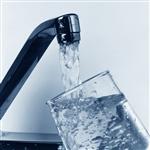Buildings & Grounds
Page Navigation
-
Last updated October 27, 2017
Drinking Water Requirements in Schools and Childcare FacilitiesDecatur Public School District #61 took a proactive approach and conducted extensive testing in the early 1990’s for the presence of lead in potable water sources in all buildings. At that time, the District remediated all sources that were above the US Environmental Protection Agency’s (USEPA) action limit – 15 parts per billion (ppb) according to the Safe Drinking Water Act.
On January 17, 2017 Public Act 99-922 went into effect mandating additional testing for lead in drinking water at any school building facility that was constructed, or a portion of which was constructed, before January 1, 2000. School buildings that are occupied by less than ten children or that are only occupied by students above fifth grade are excluded from the Act. The Act also requires school districts to notify parents and staff of results above 5 ppb. In early April 2017, District #61 performed a comprehensive sampling for lead from our potable water sources in accordance with the new public act. The source of potable water is defined as any water that may be ingested by children or used for food preparation including taps, faucets, drinking fountains and wash basins in a classroom, but excludes bathroom sinks and wash basins used by janitorial staff.
In order to comply with this new legislation, District #61 has engaged an environmental consultant, Alliance Illinois, to coordinate the sampling/testing at nearly every DPS school building. Sampling began on April 1st 2017. In accordance to the Act, indvididual lab reports* for District #61 can be viewed to the right. Results at a glance are listed below. The district took ALL affected water sources offline immediately upon receiving results. Parents can be certain we are providing a safe environment for our students and staff.
THE TESTING PROCESS: School Districts are required to collect a 250 milliliter sample of water from each source of potable water that has been standing in the plumbing pipes for at least 8 hours, but not more than 18 hours, without any flushing of the source. A second collection of 250 milliliters must be collected after a thirty second flush from the time of the first collection. The samples must then be submitted to an Illinois Environmental Protection Agency-accredited laboratory for analysis and the results submitted to the Illinois Department of Public Health.
*All lab reports have been posted.



